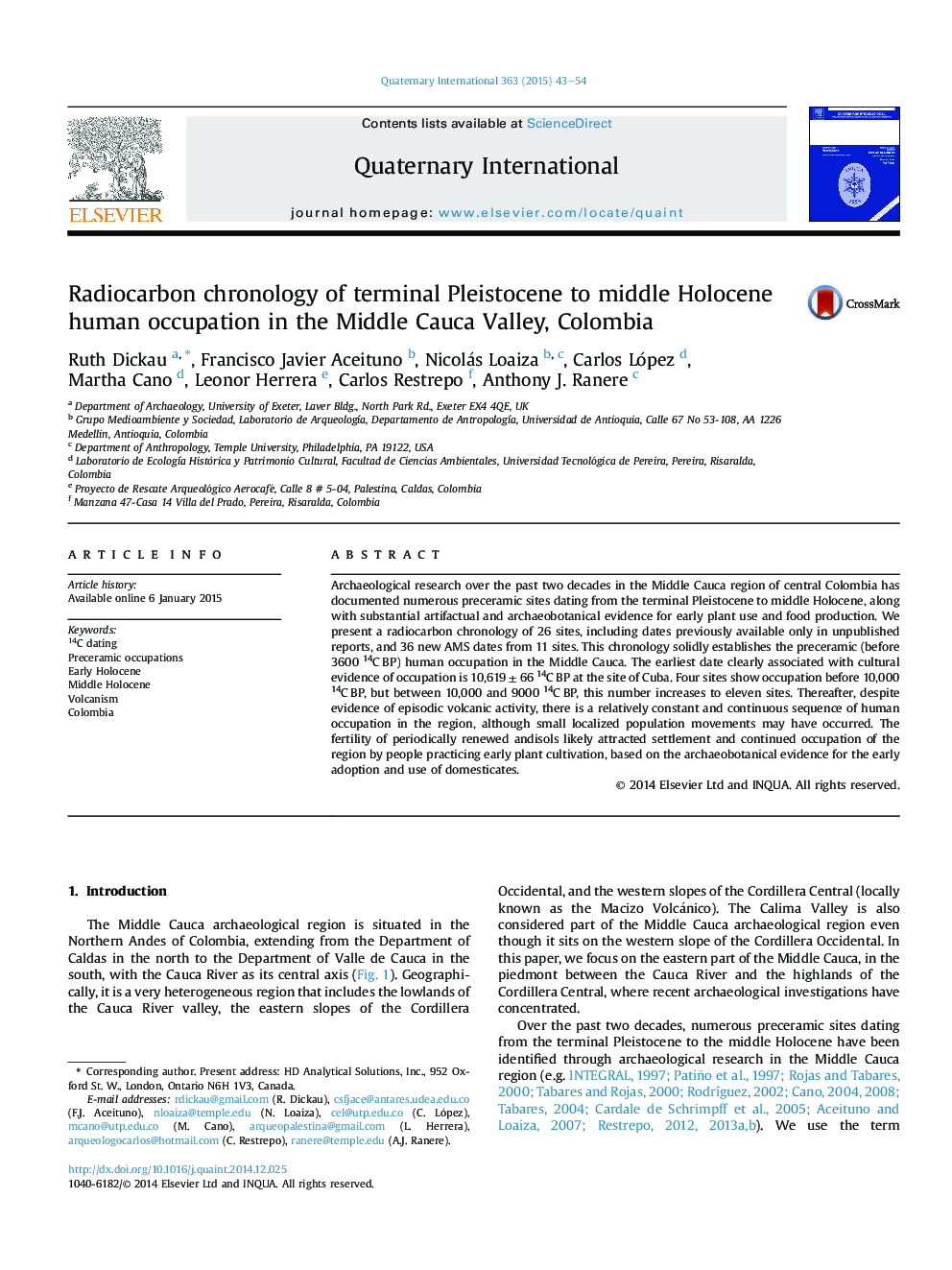| Article ID | Journal | Published Year | Pages | File Type |
|---|---|---|---|---|
| 1040954 | Quaternary International | 2015 | 12 Pages |
Archaeological research over the past two decades in the Middle Cauca region of central Colombia has documented numerous preceramic sites dating from the terminal Pleistocene to middle Holocene, along with substantial artifactual and archaeobotanical evidence for early plant use and food production. We present a radiocarbon chronology of 26 sites, including dates previously available only in unpublished reports, and 36 new AMS dates from 11 sites. This chronology solidly establishes the preceramic (before 3600 14C BP) human occupation in the Middle Cauca. The earliest date clearly associated with cultural evidence of occupation is 10,619 ± 66 14C BP at the site of Cuba. Four sites show occupation before 10,000 14C BP, but between 10,000 and 9000 14C BP, this number increases to eleven sites. Thereafter, despite evidence of episodic volcanic activity, there is a relatively constant and continuous sequence of human occupation in the region, although small localized population movements may have occurred. The fertility of periodically renewed andisols likely attracted settlement and continued occupation of the region by people practicing early plant cultivation, based on the archaeobotanical evidence for the early adoption and use of domesticates.
